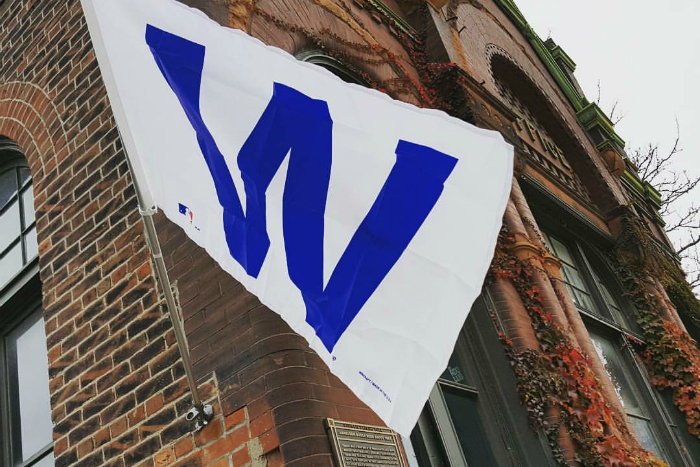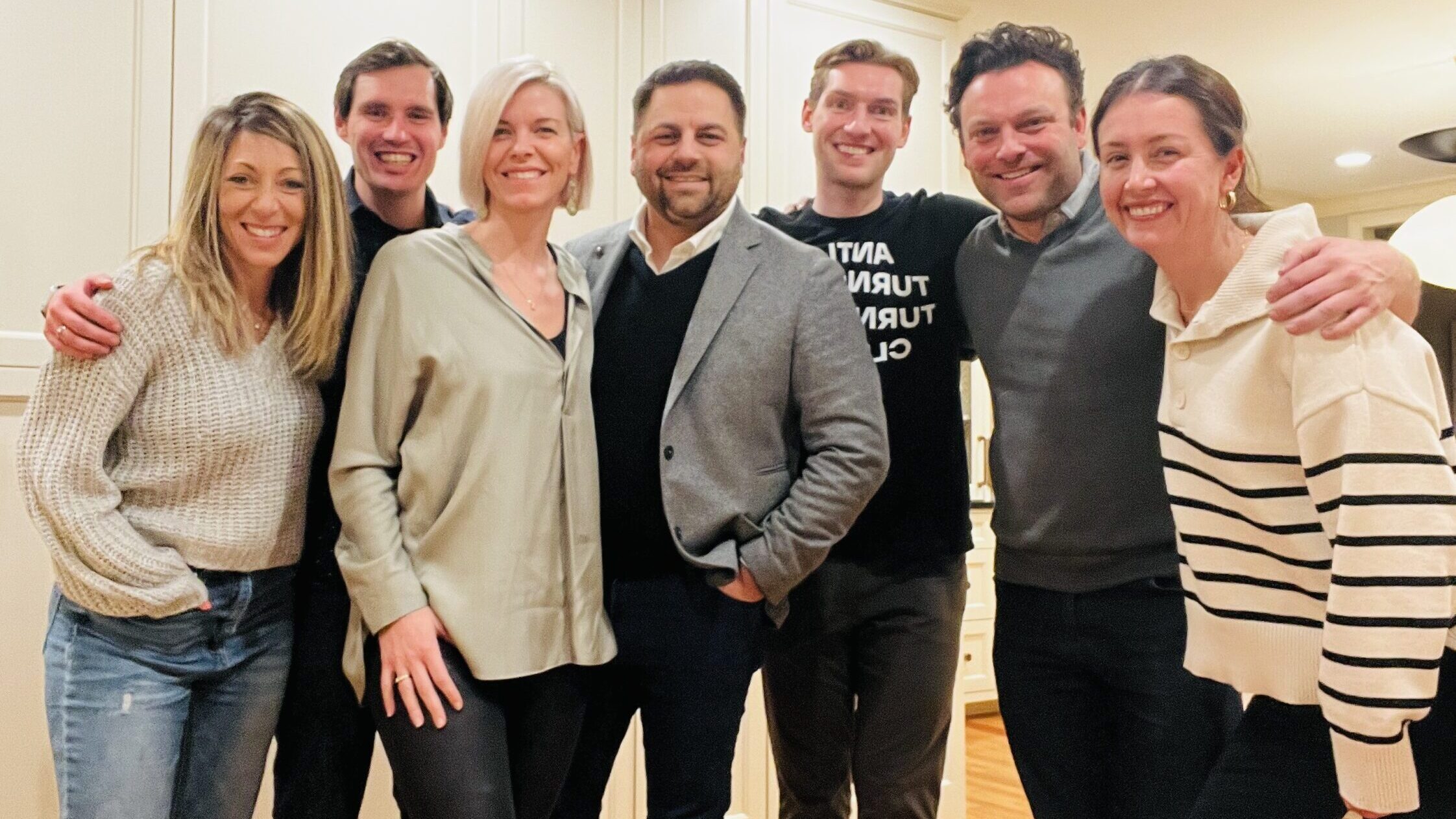
I’ve had the word “rebrand” on the brain a lot these days. It’s becoming a borderline obsession.
Maybe it’s because we’ve had a few rebranding projects come through the shop recently. But, more than anything, I blame the Chicago Cubs.
Let’s talk about those Cubbies for a moment and what their brand is all about.
If you’re a fan, which many of us at The New BLK are, you pretty much know what you’re signing up for. It’s a deep and layered brand experience, but there’s not a lot of mystery to it. You know full well that you’re opting into an ongoing cycle of dreaming big and then discovering new and exciting ways to lose, each time more ridiculously painful than the last.
You’re also choosing to buy into the idea that you are cursed.
BECOME A SPONSOR
Join us in championing the narrative of success, resilience, and ingenuity that defines Nebraska’s startup community. Learn more »
It all goes back to 1945, the last time the Cubs were in the World Series. Game four. Dude named William Sianis brings his pet goat, Murphy, with him to Wrigley Field. All was amazingly hunky dory for William and his trusty goat until some nearby fans started complaining about the smell, presumably that of the goat.
And so on comes the goat police and out goes Sianis and Murphy. But not before Sianis uttered his infamous parting shot: “Them Cubs, they ain’t gonna win no more.”
And, then the next 70 years happened, with a bounty of how-can-this-be-happening-again moments, from an untimely ground ball between Leon Durham’s legs to an unfortunate catch by Steve Bartman.
But, there’s another part of the Cubs brand experience: The “Lovable Losers.”
That’s the part that isn’t really about what happens on the field. It’s about the ivy on the walls at Wrigley Field, Harry Caray’s cartoonishly large glasses and the 7th inning stretch. It’s about rooftop bleachers, Chicago style dogs and ice cold Old Style in a can.
It’s about the Wrigleyville neighborhood, standing out on Waveland Avenue trying to catch a Sammy Sosa home run and bellying up to the bar at Murphy’s Bleachers on the off chance that you might bump into a few of the players after the game. It’s about singing “Go Cubs, Go” and flying a W flag after a win.
Wrigley’s genius
None of this is by accident. It’s the brainchild of one of the greatest marketing geniuses of all time, Philip K. Wrigley, owner of Wrigley Chewing Gum and the Chicago Cubs from the 1930s to his death in 1977.
Wrigley noticed something right after he took over the team, at the moment when the once dominant Cubs started losing: The worse you’re doing in the standings, the fewer fans you’re going to draw.
So rather than hitch his bottom line to wins and losses, Wrigley set out to change the paradigm, to find a way to sell a brand experience wholly independent of the team’s performance.
He planted ivy in the outfield, gave away the broadcast rights for his games for free, and doubled down on advertising that highlighted everything about the baseball fan experience other than the game itself.
And damn if it didn’t work.
The new Cubs
We spend a lot of time thinking about sports at The New BLK. Our clients include teams, fan groups, and sports equipment and apparel brands. We love the drama in sports, the colorful characters and rituals, the passion and the emotional pull. It’s ripe for the kind of storytelling we like to do.
From a branding standpoint, however, it’s tricky. When it comes to sports teams and their brands, the market is particularly volatile. You can get your fan base fired up, but ultimately how the team performs on the field is the single biggest factor in how well they fare in the market and ultimately how they are perceived.
That is, unless you’re the Cubs.
That potent brew of cursed souls and lovable losers has made for a pretty powerful brand and one that crushes it year after year in ticket sales, media reach and merchandise. It’s a juggernaut. So, why change?
That was the longstanding rap against the Cubs anyway. But then a funny thing happened.
The front office took a radical turn and started charting a very different long range course. From scouting to player development to trades and free agent signings, they transformed the culture.
This new Cubs team is one that plays a beautiful and highly entertaining brand of baseball. They have power pitching, tremendous defense, a balanced lineup and loads of depth. They are young and athletic, with ear to ear smiles and a swagger in their step.
When brands evolve
See, this what can happen with brands: They evolve. It makes sense that they would, as our collective knowledge base and perspectives take major leaps forward, and as new technologies are introduced and customers start demanding totally different things.
Sometimes this kind of change feels profound enough to prompt a deliberate rethinking of how to best present yourself to the world.
Committees are formed, RFPs are drafted, budgets are set aside. It’s like calling a really long timeout, to take stock of the brand from top to bottom and to scrutinize it in ways you normally wouldn’t.
But other times the market decides for you. And when that happens, it’s a stark reminder that your brand is not completely yours and really never was to begin with.
Your brand, like every other brand, has a life of its own. After all, what is a brand other than how people experience it?
Which Cubs now?
In 2016, the Chicago Cubs won 103 games during the regular season and led their division by a mile the entire way.
They won the division series against a Giants team that had won three of the previous six World Series.
Then they beat a Dodgers team featuring one of the greatest pitchers of this generation to win the National League pennant and earn a trip to their first World Series since 1945.
As I write this, the Cubs have just won game six of the World Series and now stand one win away from their first World Series title since 1908.
The W flag, which dates back to the 1930s as a low-tech way of communicating across the city when the Cubs won, has taken on a new life as a trending hashtag and the hottest selling item in Wrigleyville.
Winning will do that.
Maybe the best way, indeed the only true way, to rebrand isn’t through an ad campaign or a new logo but through rethinking everything that you do, reimagining what’s possible and executing a game plan to change the very product you’re bringing to the market.
It takes foresight, discipline and a willingness to accept fundamental change. Whenever I talk baseball with a non-Cubs fan, this subject inevitably comes up. If the Cubs win, won’t Cubs fans forever lose their identity? What will we do without the curse and the lovable losers label?
Honestly, I don’t know. The logo won’t change, the uniforms will stay the same. Wrigley will still be Wrigley. But what will the Cubs brand be?
By the time this article posts, the World Series will be over. Maybe the Cubs will have made history and won it all or maybe they will have just come really close.
Regardless, their rebrand is already underway.
—
Eric Gautschi is Managing Partner/Creative Director at The New BLK. The New BLK is an ad agency, creative think tank, and content production studio based in Omaha.




One response to “What the Cubs can teach us about branding”
Thanks for the post Eric! As a fellow Cubs fan as well as a branding & creative professional, I love your take on the current/future of the Cubs’ brand. It feels like it’s the beginning of a case study. Time will tell.
The one thing that struck me is your use of the term “evolve” relating specifically to the Cubs. I always connect that term with “improvement, or progression” as opposed to just change. I suppose if the success of a sports franchise brand boils down to wins and losses, the Cubs brand may have evolved. But I think you do an excellent job dispelling the notion that successful brand = winning. So is it just change? Will it become another sports brand?
Undoubtedly now that Cub fans have tasted glory, they will want more – but at what cost? The World Series win will likely put greater emphasis on generating revenue for high-priced (and assumed high-performing) players to continue their winning “tradition”. And it will likely bring in more casual fans that want to share in the experience of watching a winner. If so, I’m less convinced than you are that “Wrigley will still be Wrigley”. Look at what happened to Comiskey, Detroit and even Yankee Stadium – an organization that arguably didn’t need extra revenue, except to keep up their pace of free-agent signings. And would a fundamental change in the ballpark alienate diehard, working class Cub brand advocates and water down the brand itself? Time will tell. Hopefully it won’t take another 108 years though.